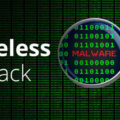
Hackers are innovative and industrious individuals, a description which is best demonstrated by their recent leverage of MSBuild to deliver malware.
The Microsoft Build Engine (MSBuild) is an open-source platform which allows software developers to test and compile their source codes. Operational since 2003, the platform has proved to be highly popular with developers and, accordingly, supports a large number of users. And it’s this popularity which has made it so attractive to hackers. By targeting these source codes at a development stage, the hackers are able to piggyback their malicious software into genuine software.
While your organization may not be involved in software development, there’s always the risk that you could end up working with software which is pre-loaded with malware. Therefore, we’re going to take a look at this MSBuild hack.

How are Hackers Infecting MSBuild?
Project files housed within MSBuild can be integrated within executable files which allow the hackers to launch their malicious payloads. But, as ever, hackers have been keen to remain stealthy; the infected payload does not run as a file. Instead, the malicious code is loaded into the PCs memory and it is here that the attack is launched. So far, it has been established that at least three forms of malware have been injected into systems via this approach. Redline Stealer, Remcos and QuasarRAT are the most recognisable forms of malware and have the potential to cause great damage.
Redline Stealer is primarily used as a data harvester and, as such, is mostly employed to steal login credentials and sensitive data. Remote access and surveillance, meanwhile, is the heartbeat of Remcos and allows hackers to hijack PCs remotely. Finally, QuasarRAT is another remote access tool and one which grants hackers full control of infected PCs. Naturally, these three malware variants are the last things you want on your system. And, given that they run filelessly and in the memory of a PC, it’s a threat which is difficult to tackle.
Protecting Yourself Against Memory Based Malware
Malware which operates from within the memory of your PC is difficult to tackle, but not impossible. Start by making sure you carry out these best security practices:
- Monitor Network Activity: Regardless of whether a malware attack is file-based or fileless, there will be noticeable changes in your network activity. Any unusual spikes in data transfer or transmissions to unusual destinations should be investigated immediately.
- Ensure PCs are Updated and Patched: Many fileless attacks take advantage of hardware and software vulnerabilities. Therefore, it’s critical that all updates are implemented as soon as they are available. This strategy ensures that, even if your PCs memory is breached, the chance of this malware taking hold is minimized.
- Disable Macros where Possible: Macros are useful pieces of code that can save users time by carrying out automated procedures instantly. But they can also be manipulated by hackers to carry out malicious procedures. And that’s why many IT departments choose to disable these within organizations except where trusted macros have been tested and verified.
Unfortunately, not all antivirus software can detect fileless malware such as that involved with the MSBuild hack. Conventional, file-based malware leaves behind digital footprints which are easy to detect, but this is not the case with fileless variants. In order to fully protect yourself, check with vendors whether their software has the capability to combat fileless malware.
For more ways to secure and optimize your business technology, contact your local IT professionals.







